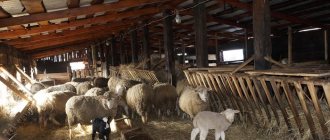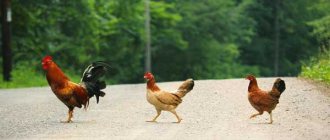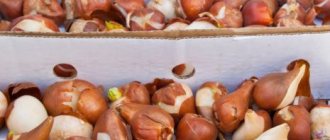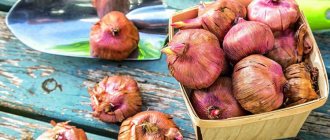The egg production of chickens differs at different times of the year, which is due to the physiology of the birds. As a rule, in the autumn-winter period, chickens lay less eggs than in warm weather, since they move less, consume a reduced amount of feed, and metabolic processes proceed more slowly. There are special secrets to increasing the egg production of chickens in winter - in particular, you should make changes to their diet and pay attention to their living conditions. What to feed chickens in winter to help them lay eggs?
What to feed chickens in winter?
Feeding characteristics of laying hens
The bird will lay eggs all year round if its diet is correctly formulated and takes into account the norms for the content of mineral supplements and vitamins. It is equally important to feed chickens three or four times a day, with each serving of food containing all the required elements in full. You can prepare bird food yourself; an approximate daily diet consists of:
- 120 g of grain - of which 20 g is wheat, 40 g is corn, 30 g each is oats and barley;
- 100 g boiled potatoes;
- 3 g chalk;
- 2 g bone meal;
- 7 g cake;
- 1 g yeast;
- 0.5 g salt;
- 30 g mash.
Chicken feed
Under no circumstances should you give chickens sprouted or green potatoes or a decoction of them - this can cause poisoning. It is forbidden to give poultry chicken meat, quicklime, citrus and watermelon peels. These foods cause digestive problems and can kill chickens.
A complete menu for birds consists of dry, combined and wet food. Dry food includes feed and grains - buckwheat, millet, corn, barley, bran, oats, rye, wheat. Cereals contain a lot of fiber, vitamins and carbohydrates. But for a balanced diet, chickens also need other useful elements - protein, phosphorus, calcium and others. To provide them, legumes, shells (crushed), chalk, flax, table salt (in a minimal amount), and ash are added to the menu.
Properly balanced chicken feed gives high egg production rates
Wet food is a mash - a mixture of products filled with milk or clean water, prepared from:
- cake;
- croup;
- hay flour;
- raw and boiled vegetables;
- greenery
A diet in which the breeder gives the chickens wet and dry food is considered a combined diet. This is the best option for natural feeding of laying hens to increase their egg production.
In warm weather, birds can peck grass, replenishing their supply of nutrients, and in cold weather, fresh greens should be added to their diet.
Combined feed for chickens
Conditions for good egg production
In order for chickens to lay eggs well, regardless of the time of year, it is necessary to create the most comfortable conditions for this. There are no uniform requirements for equipping a chicken coop, but when arranging it you should adhere to certain rules:
- The chicken coop is located in a quiet place.
- Nests should be installed at the same height and protected from drafts.
- It is preferable to use clay to fill the floor - it freezes less in winter. You can also sprinkle sawdust on the floor; chickens will dig into it with pleasure.
- The chicken coop should not be too large; in a spacious room, birds lay eggs less often.
- The optimal temperature for laying eggs varies between +23 - +25 degrees.
- The chicken coop should have several windows located so that sunlight enters the building, but does not fall on the nests.
Chickens need comfortable conditions to lay eggs.
Prices for a nest for laying hens
Nest for laying hens
Diet is also important to increase the number of eggs produced. In winter, it is necessary to turn on the lamps in the chicken coop early, at the same time, and then feed the birds for the first time that day. The second feeding occurs at lunchtime, around one o'clock in the afternoon. In the morning and afternoon feeding, chickens are given mash. In the evening, an hour before the lights turn off, the chickens are given dry food. Strict adherence to the regime will allow you to maintain the egg production of chickens at a high level.
Winter diet of laying hens
Of course, the summer period for keeping chickens is the most favorable time, during which they better stock up on the necessary vitamins with the help of natural feed. But sooner or later nature takes its toll, the seasons change, taking with them both the green grass and the leaves of the tops of home-grown vegetables. It is impossible to stock up on them for the winter, because birds do not feed on hay, like cows, for example, so feeding your chickens in winter can be somewhat difficult for novice poultry farmers. However, you need to understand this issue and how chickens get adequate nutrition in winter.
First of all, you need to understand that when keeping chickens at home in winter, they need to be fed especially often. This is due to the fact that during the cold period of the year the bird spends a lot of energy maintaining the desired body temperature. In order to prevent the bird from freezing, it must be placed in a closed room and proper maintenance and feeding of domestic chickens in winter must be ensured. Proper care of wet nurses requires maintaining the temperature regime in the chicken coop, so it is advised to take care in advance about possible insulation and creating the most comfortable conditions. The warmer it is, the less energy the bird will spend on not freezing, directing this energy to the formation of eggs, and this is the main purpose of keeping laying hens.
How is feeding different in winter?
Feed for poultry during the cold season should be as varied as possible and contain more nutrients. These requirements are due to several factors:
- low temperature in the chicken coop;
- decreased level of poultry mobility;
- the impossibility of the bird independently obtaining a standardized amount of protein food and green fodder.
In winter, you need to feed the birds 3-4 times, try to give them more juicy and green food during the day and dry food in the evening. Grated or chopped carrots, pumpkin, beets, and zucchini are suitable as succulent food.
Combined feeds
Vegetables should not be skin-side up, as birds prefer to peck the flesh. If the food is given in ground form, then it is mixed with ground grain crops - this improves the digestibility of the products.
Green food is also included in the diet in maximum quantities. In winter, you can give chickens fresh branches of coniferous trees - the birds get the necessary nutrients from them, and the substances released by the pine disinfect the air in the chicken coop. It is also worth feeding the birds hay and dried nettles. Sprouted oats and wheat are extremely healthy, they contain the maximum amount of nutrients and chickens eat this product with pleasure.
Green feed is as necessary for chickens as grains.
In winter, birds need:
- fish meal or oil;
- fermented milk products - whey, cottage cheese;
- additives with a high calcium content - eggshells, chalk, feed shells;
- warm water - in order to provide chickens with constant access to heated water, it will need to be changed several times a day.
For winter feeding of birds, you can grow fodder varieties of carrots and beets, pumpkins, zucchini, and potatoes on your site.
Stocks from the fall help chickens restore the balance of nutrients in the body.
Video - Features of winter feeding chickens
The features of the diet for laying hens and the rules for creating a complete menu to increase egg production are described in the video:
How to properly feed birds in the cold?
Feeding chickens in winter should be done at least 2-3 times a day. In the morning, experienced poultry farmers advise feeding the birds with warm food, for example, mash. It is necessary to mix boiled potatoes, fish broth, vegetables and porridge, if possible, add cottage cheese or milk. The pets will be very grateful for such a royal breakfast and will definitely be rewarded with a large number of eggs!
Particular attention must be paid to potatoes. It is an excellent source of starch, which is necessary for the formation of eggshells. This means that without it you will not be able to get strong eggs from chickens. It is important to organize a separate supply of potatoes for birds in advance. To do this, it is not at all necessary to select or buy a good large root vegetable. An economical option would be small potatoes, which are not suitable for human food preparation. It can be bought from people who breed this crop. Its price is usually low, but its presence in the diet is mandatory for laying hens. During the day you can pamper the bird with compound feed, but it is important to try to mix chalk, table salt or shell dust into it. All these components improve the ability to form eggs in the body.
In the evening, caring for chickens at home involves feeding them a mixture of different grains, to which it is advisable to add barley cake. Such a nutritious dinner will help keep the laying hens strong until the morning and maintain their body temperature. A clarification should be made here: veterinarians usually recommend grinding grain crops before feeding them to birds. The optimal size of crushed pieces is 1-2 mm. This will make it easier for the bird to swallow and digest food, which will reduce its energy costs and save them for egg laying. In order to properly prepare grain feed, it is a good idea to watch special videos on the Internet, in which experienced owners clearly explain all the rules for their preparation.
If, while preparing homemade food, food waste remains in the form of cabbage leaves, beet peelings, carrots or other crops, you should not rush to throw them away: they are perfect for feeding chickens. A good option is to cook poultry porridge with them: it will serve as an excellent breakfast.
Recipes for preparing food for feeding birds in winter
Winter egg production directly depends on the temperature level in the chicken coop. To ensure that birds do not stop laying eggs, the room temperature should not be lower than 15 degrees Celsius. The lack of heating can be compensated for by nutritious and satisfying food, which is given to chickens in the morning and lunchtime. You can prepare a warm mash from the following ingredients (per 1 feeding per bird):
- boiled potatoes - 50 g;
- grain - 30 g;
- warm water or yogurt - 50-60 g;
- legumes and bran - 6 g each;
- salt - 0.5 g;
- crushed chalk and bone meal - 2 g each;
- fish oil - 1 g;
- grass or cake - 4 g.
You can prepare the mash using meat or fish broth, fermented milk whey or yogurt. The more varied the bird's diet, the more eggs the chicken breeder will be able to collect.
The chicken mash contains several types of food with their nutrients
A mash is a dish that the bird owner can make adjustments to on his own, at his own discretion. Most often, a dish is prepared from what is on hand - vegetables, cereals, grains, peelings. The mash can be either boiled or steamed by simply pouring hot liquid over it. This dish is prepared one at a time so that the product does not spoil.
Waste from the human table is also suitable for feeding chickens, but not everything can be given. Pasta, cereals, dried bakery products, vegetable and fruit peelings, tops, fish heads and offal, meat and bones are suitable for feeding birds. It is not advisable to feed birds leftovers from fatty, spicy, chemical-containing food - this can cause digestive upset.
Feeder for chickens in a poultry house
Video - Methods of germinating wheat for laying hens
Proper diet for chickens at home
The daily diet for young chickens must be very carefully selected if the bird lover wants to get the maximum number of eggs from each head. To do this, you should take care of the following components that should be included in the diet. The calculation is carried out per bird:
| Component name | Weight in grams |
| Chalk | 3 |
| Shell | 5 |
| Salt | 0,5 |
| Additive for egg production | 1 |
| Bone flour | 1 |
| Wheat | 50 |
| Corn | 10 |
| Bran | 20 |
| Barley | 40 |
The birds are also fed with homemade feed, called mash. In addition to the main components, in the form of crushed grain, they contain additives of mineral content.
In order for the chicken to lay eggs more actively, experienced bird lovers know that their daily diet should include fresh grass and vegetables. Everything should be crushed as much as possible, which will enable complete absorption of food.
Water and gravel are the components that are vital in chicken digestion, so you shouldn’t forget about them either.
To ensure that the laying hen receives the correct amount of calcium, her diet includes feed that is specially adapted for this category of poultry.
Compound feed is a mixture that includes vitamins, grains, and microelements necessary for increased egg production.
Organization of feeding laying hens
Secrets of increasing egg production in winter
To ensure that the number of eggs laid by chickens during cold weather does not decrease, the number of feedings should be increased - if in summer birds eat twice a day, then in winter - at least 3. It is also important to ensure that the food is sufficiently nutritious and varied, and contains all the necessary substances.
Compound feed contains vitamin supplements
Vitamin supplements
In summer, chickens get their vitamins from green food, tops, fresh roots and vegetables. In winter, birds cannot obtain enough vitamins on their own, so chicken farmers must add them to the food for laying hens. Chickens are given special additives called “premixes,” which are natural mixtures added to the main feed. The premixes do not contain hormones, growth stimulants or preservatives, but they contain a large amount of amino acids, vitamins, macro- and microelements that are so necessary for chickens.
Vitamin complex supplements
Price for complete feed for laying hens
Complete feed for laying hens
The following should be used as additional vitamin supplements in cold weather:
- dried seaweed - they help strengthen eggshells and saturate the yolk;
- fish oil - it provides chickens with essential fatty acids;
- probiotics - help increase the immune defense of birds, which is significantly reduced in winter, and normalize digestion;
- apple cider vinegar - improves the overall health and quality of the bird's plumage.
Chickens need vitamin A. Birds that receive it in sufficient quantities, even in winter, lay large eggs with a bright yolk. A lack of vitamin can be determined by the dry cornea of the eyes and skin. Vitamin E strengthens the immunity of birds, increases egg production, and its deficiency causes dysfunction of muscle and nervous tissues. Vitamin D is necessary to prevent rickets; a sign of its deficiency is the softness of a chicken egg shell. B vitamins are required for the normal functioning of the endocrine and digestive systems and the prevention of skin diseases. Chickens can get the entire range of useful substances from natural products or from specially developed vitamin complexes that are added to the main food.
Dry chicken feed
A good source of vitamins are rose hips, red rowan berries, chestnuts, hawthorn, and acorns harvested in the fall. The berries are given to birds in crushed form along with mash or dry food.
Conditions of detention
The room for keeping birds needs to be spacious, but not excessively large - for 2-3 birds there should be 1 square meter of area. Also, a certain temperature should be maintained in the chicken coop - it should not fall below +15 degrees. If the outside temperature is too low, the birds' home should be heated. A significant decrease in ambient temperature negatively affects the level of egg production.
With the help of daylight and warmth in the coop, birds may not notice the arrival of winter
Insulation of a chicken coop is carried out in the following ways:
- Laying the bedding - a layer of slaked lime (1 kg per 1 square meter) is placed on the floor, sawdust (large) or straw is laid on top of it in a 10-centimeter layer. As the top layer is trampled, thermal insulation material is added, and the litter is loosened with a pitchfork. In spring, the litter can be used as fertilizer for garden beds.
- Insulation of walls, doors, windows with heat-insulating material. This will prevent drafts and reduce heat loss in the room.
- Installation of an infrared lamp. This artificial heating allows you to maintain the optimal temperature in the chicken coop, increases the chickens’ immunity, and the light from the lamp has a calming effect on the birds.
Infrared lamps in the chicken coop
Prices for infrared lamps
Infrared lamp
Since the duration of daylight hours is reduced during the cold season, it is worth equipping the chicken coop with lighting fixtures. Artificial lighting must be turned on in the morning (from 6 to 9 o'clock) and in the evening (from 17-18 to 20-21 o'clock). Care must be taken to ensure that the light from the lamp does not fall on the birds’ nests, otherwise they may peck off the laid eggs.
Winter molting of chickens
The length of daylight hours is regulated by the chicken breeder. He must ensure that the daily waking period does not exceed 14 hours.
What else should you not give to laying hens?
Chickens are such picky eaters that they will eat anything, so you need to keep a close eye on this. Moldy, fermented foods, raw potatoes and unchopped root vegetables should not be allowed into the chicken coop.
Important!
It is equally important to ensure that the chicken coop is free of cellophane, plastic, foil and other inedible items, as well as toxic plants.
Feed composition
It is not difficult to prepare feed for laying hens yourself. The main thing is to maintain the necessary proportions and include all the necessary ingredients:
- cereals;
- grain legumes;
- grass;
- dairy products;
- roots;
- bone meal.
It is also necessary to add a small amount of salt and yeast to the feed for laying hens.
The use of electrical units for the production of feed
To prepare high-quality food for birds, you need to put in a lot of effort - the products need to not only be chopped, but also boiled or steamed. To save your own time and effort, chicken breeders recommend purchasing:
- Multifunctional electric chopper - this unit can crush grains and legumes, chop root vegetables and vegetables. It is better to purchase a device with a two-phase motor - its power and functionality will be enough to provide food for poultry.
- Steamer. This device is designed for preparing feed from food waste, green and succulent feed.
Feed chopper
Prices for grain grinder
Chopper for crushing all types of feed grains and seeds
It is quite possible to maintain the level of egg production in the frosty season - for this you will need to create a full menu, add mineral and vitamin supplements to the birds’ diet, and equip a chicken coop. To provide birds with everything they need, it is not necessary to purchase expensive food; it is quite possible to prepare nutritious and satisfying food yourself from available vegetables, grains and legumes, root vegetables and other products. The main thing is to follow feeding standards, then a positive result will not be long in coming.
Types of feed: which one is good for laying hens
For those who raise poultry, it is very important to remember that a correctly selected balance of all vital components will help raise a healthy and productive flock. In this regard, when composing the daily menu, it is worth considering the presence of the following components.
- Protein - this component helps the full structure of chicken cells and tissues. Also in the egg, this substance plays a very important role and is one of the main components. To do this, the diet includes: legumes; • cake; • earthworms; • sunflower meal; • shellfish; • bone flour; • fish waste; • rapeseed; • soy.
- Fats accumulate in the subcutaneous layer and form an energy reserve, which is actively involved in the structure of the egg. In order for the laying hen to receive this important component, the diet includes: oats; • corn.
- Carbohydrates help organize the full functioning of the bird’s entire body; for this it is recommended to add to the food: pumpkin; • potato; • fodder beets; • carrot; • whole grains.
- Vitamins are very important for chickens, especially vitamins A, B, D. If they are not enough in the diet, this can cause pain in the laying hen’s body, which will negatively affect her egg production. To avoid this, the poultry menu includes: pine flour; • fish fat; • green grass; • silo; • regular yeast.
- Minerals are responsible for the structure of the chicken’s bone corset and for the formation of the egg shell. Therefore, it is worth adding to poultry food: bone meal; • wood ash; • chalk; • crushed shells; • gravel; • lime.
Feed mixture for laying hens
Norms of daily feed consumption
Raising chickens that lay eggs will be successful if you follow two important rules:
- Overfeeding of poultry is prohibited . Many people new to poultry farming think that the more a chicken eats, the more eggs it will lay. It's a delusion. If a chicken overeats, obesity occurs, leading to a decrease in egg production. Egg yield also decreases if the bird receives food that is unbalanced in fats, proteins and carbohydrates.
- Underfeeding of poultry is prohibited . Lack of nutrition immediately affects the quality of eggs. Underfed chickens lay small eggs with thin shells, or even without them at all. Malnutrition affects productivity, and then the well-being and health of the bird.
Nutritional standards for adult chicken
Laying hens raised in households receive a diet that differs significantly from the menu on large poultry farms. Backyard chickens have access to natural products, so their eggs are healthier and more nutritious.
Every year the laying hen consumes:
- mixed feed - approximately 40 kg;
- greens – 15 kg.
The annual consumption rate is calculated on a daily basis. On a day, an adult laying hen should receive:
- feed – 120-160 g;
- including greens - 40-50 g.
Daily caloric content of an adult chicken:
- free-range – 300-320 kcal;
- when kept in a cage – 260-280 kcal.
Food should have the following balance:
- protein – 15-20%;
- fats – 3-5%;
- carbohydrates – 70-75%;
- fiber – 5-6%.
In winter, food standards are increased by 15-20%, since it is necessary to replenish the energy that the bird spends on maintaining heat.
Why does chicken need so many carbohydrates? She needs energy for:
- egg formation;
- movement - chickens are active and move around the yard and chicken coop a lot.
There are breeds that easily tolerate frosts without reducing egg production - they need more feed. Others do not leave the chicken coop, preferring warmth, then feeding standards, on the contrary, are reduced.
Egg formation occurs at night, so chickens should be fed more densely in the evening, especially in the winter season.
The chicken should receive a drink - about 300 ml of water per day.
How do nutritional standards depend on the age of the chicken?
We have already looked at how to feed chickens in the first months of life. Next, nutrition will change as the chicken grows older:
- The period from the 2nd to the 4th month of life. During these months, bones are quickly formed, weight increases, and future productive qualities are being laid. Calorie content is reduced to 260 kcal per 100 g of feed. Protein is given at 15%, and the fiber rate increases to 5%, and remains this way until the end of the chicken’s life. The bird must also receive enough microelements from the feed - the dosage is the same throughout the life of the chicken.
- The period from the 4th to the 5th month of life. The stage of formation of egg production is completed. Laying hens are given food with a calorie content of 270 kcal/100 g. Protein - 16%. At this stage, it is especially important to provide the chicken with calcium - 2-2.2%. Phosphorus and sodium - 0.7% and 0.2%.
- From the 6th to the 11th month, the formation of the body is completed. The bird continues to receive the same feed as before, only the protein rate increases to 17%.
- From 12 months, calorie content is reduced to 260 kcal/100 g. Protein – 16%. Increase calcium and phosphorus levels. It is important to prevent overeating, which causes digestive problems, obesity and a drop in egg production in chickens.
What not to feed laying hens
There is a certain category of foods that should not be given to chickens.
- Fresh, white bread or loaf. You can give bread, but it must first be dried and soaked; black stale bread is also suitable. Fresh bread is very poorly accepted by the laying hen's stomach.
Before slaughter, the bird can be given mash with white bread. This is done ten days in advance so that the meat acquires a special pleasant taste.
- Salted and fresh fish. It is recommended to include fish in the diet of chickens, but it should not be given very often in salted and raw form. Before serving, the product is boiled as much as possible so that the bones become soft. Before serving, it is mixed with the main food.
On days when fish is served, you should definitely increase the volume of water you drink, as this product increases the desire to drink.
- Potato peelings. Potato peels are quite rough food and therefore should not be included in the diet of laying hens. But it is recommended to give boiled potatoes to birds; this product is very useful and can be introduced into the feeding process two weeks after the chicks are born, in the form of wet mash.
- Beetroot. It is not recommended to feed chickens plain beets, this is due to the fact that it can cause severe diarrhea and lead to cannibalism, due to the possibility of staining it the color of blood. But it can be given in feed form and in the form of tops.
You also cannot:
- citrus fruits and their peels;
- celandine;
- sweet and salty foods;
- ambrosia;
- tomato tops.
Prohibited methods of feeding laying hens
Egg production of different chickens per year and how to increase it
Factors that affect egg production:
- poultry health;
- lighting;
- breed;
- air temperature;
- age of the chicken;
- nutrition.
To increase the productivity of birds, it is recommended to adhere to the following feeding rules.
- Food should be provided regularly and in equal portions.
- The first meal should be as soon as the hen wakes up, that is, early in the morning.
- Birds should not be underfed or overfed; all this can negatively affect the productivity of the bird.
- The second feeding is carried out an hour before the chickens go to bed.
- The diet should be varied and enriched with vitamins and minerals.
- The number of eggs obtained depends on the quality of food, so it is imperative to maintain a balance between carbohydrates, proteins, vitamins, and fats.
- It is recommended to increase the nutritional value of the feed as much as possible in the spring, since at this time the incubation period begins and this helps to obtain healthy offspring.
- It is very useful to include in the main diet: whole grains, corn, barley, wheat, oats.
It is very important to provide good lighting; this factor can positively affect the productivity of chickens. It is advisable to provide birds with 17 hours of daylight.
The air in the room where birds are kept should be dry and as warm as possible. In this regard, the chicken coop must be well insulated. During cold weather, you need to take care of heaters in advance. If the hen gets cold regularly, she will stop laying eggs well.
The most productive breeds include:
| Breed | Beginning of egg production | Number of eggs per year | Additional factors |
| Loman Brown | from 5 months | 280 | The eggs are large, the bird is hardy |
| Leghorn | from 6 months | 350 | very popular breed |
| Minorca | from 7 months | 180 | eggs are large, but productivity is low, does not like low temperatures |
| Sussex | from 6 months | 230 | with good productivity it has tasty meat |
Collection of eggs from laying hens
At what age do chickens begin to lay eggs and how to increase egg production
Now let's talk about external signs when chickens begin to lay eggs. It is believed that a chicken begins to lay eggs when its weight reaches 75% of an adult bird. Approximately this age occurs at 17–20 weeks.
Early egg production, in some cases, negatively affects the health of the bird, so you should not artificially rush the laying hen.
- Small breeds lay their first egg much earlier than larger breeds.
- Poultry hatched in February and March mature faster than May and summer hens.
- If the hen is born too late, she may begin laying eggs only after a year.
- Egg breeds of chickens begin to lay eggs from the 17th week and do this for ten months without a break.
- The average laying hen produces about 200 eggs per year.
- The English Leghorn breed is considered the most productive; it is this breed that is loved by domestic poultry farmers who breed chickens for eggs. The norm for this breed is 340 eggs per year, and for especially gifted ones, productivity can reach up to 370 eggs.
- Hybrids lay 2% more eggs, but their descendants do not adopt these qualities, so in this case it is recommended to replace the pullets every 24 months.
- Meat-egg breeds produce up to 170 eggs per year, but their maturation begins at 22 weeks.
- Meat breeds begin laying eggs later than all other chickens, at about the eighth month. Their productivity is much lower, but the eggs are much larger in size. Such breeds lay eggs for no more than seven months. Such chickens can lay up to 120 eggs per year.
- Fighting breeds lay eggs very rarely and all their eggs are mainly intended for hatching chicks.
Chickens can lay eggs for up to fifteen years. But it is worth knowing that every year the number of eggs decreases, which ceases to bring benefits to the breeder, and the old bird does not go to slaughter. Therefore, many try to keep a bird for no more than two years.











